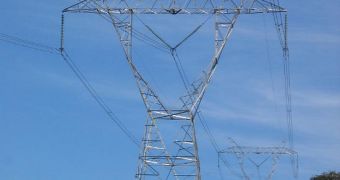Researchers at the Stanford University, in the United States, will receive important funds to study methods of improving electricity transport and distribution, through smart power grid systems. Their job will be to come up with efficient, cost-effective ways of doing so.
University researchers will get $1.2 million divided into four grants from the TomKat Center for Sustainable Energy at Stanford, and the money will be used to pursue new project and ideas related to flow of electricity from source to consumer.
These are the first grants to be awarded by the Center, which was founded less than a year ago. The end result of the type of researches supported by the facility is reducing greenhouse emissions, and increasing conservation levels.
“To develop sustainable energy systems for the future, we asked our faculty to focus on building up Stanford's capabilities in the area of the power grid,” explains the director of the Center, Stacey Bent.
“Our goal is to provide seed grants to our investigators so they can initiate new projects, then run with their ideas and secure additional funding from other sources,” the official goes on to say.
One of the main approaches that can be used to reduce GHG emissions is to lower the peak energy demand. Promoting energy conservation and the use of renewable and alternative sources are also efficient methods, experts believe.
An added advantage, this time for consumers, would be that smart power grids are capable of informing them in real-time about their usage levels, which could help people better managed their electricity costs. Furthermore, the price of energy could also decrease, due to a higher level of efficiency.
“This funding allows us to gain an understanding of the technical possibilities and design opportunities for the electrical grid of the future,"” explains grant recipient Sanjay Lall.
“We plan to study and optimize the trade-offs using simulations and analytical models,” the scientist adds. Lall, an associate professor of electrical engineering and of aeronautics and astronautics at the university, will work together with consulting professor of electrical engineering Dimitry Gorinevsky.
Researchers Abbas El Gamal, Stephen Boyd, Ben Van Roy, Amit Narayan and Daniel O'Neill, who are all electrical engineers at Stanford, will analyze and model a smart grid using a software simulation system called GridSpice.
Another team will look into how to reduce regulatory barriers that prevent the access of energy form renewable sources to the market. The team is led by experts Frank Wolak and Mark Thurber, who are also collaborating with Boyd.
The two researchers are the leaders of the Freeman Spogli Institute for International Studies (FSIIS) Program on Energy and Sustainable Development.
“Our research will develop key analytical tools to assess the economic and environmental benefits of transmission expansions to support renewable generation to regulators and policymakers,” Wolak explains.
“We are grateful to Tom Steyer and Kat Taylor for their incredible generosity and vision. With the range and depth of our research talent at Stanford, we are off to a great start contributing to the next-generation power grid,” Bent adds.

 14 DAY TRIAL //
14 DAY TRIAL //